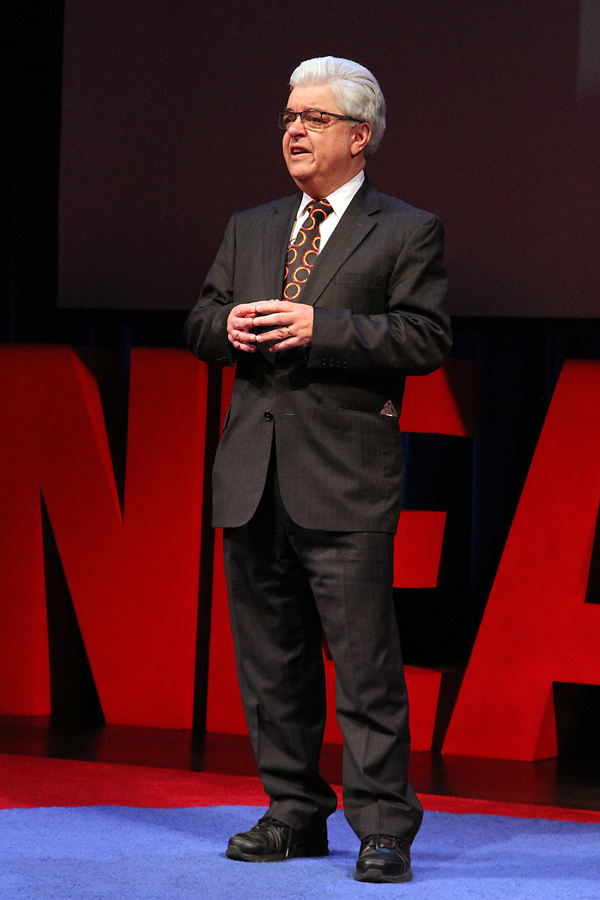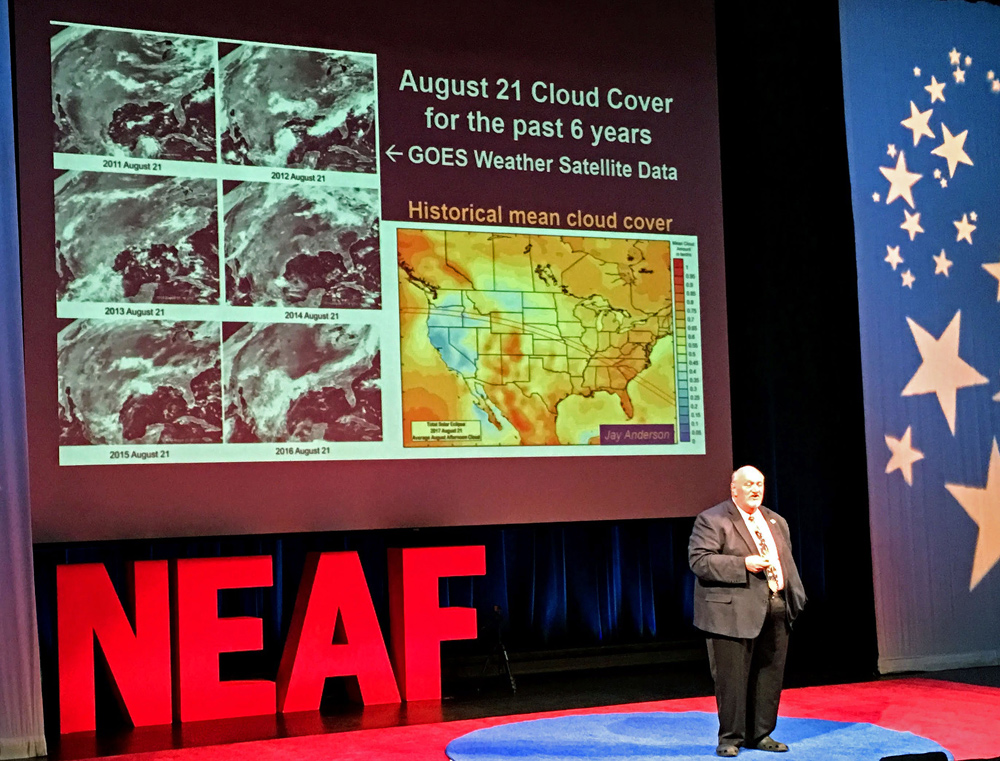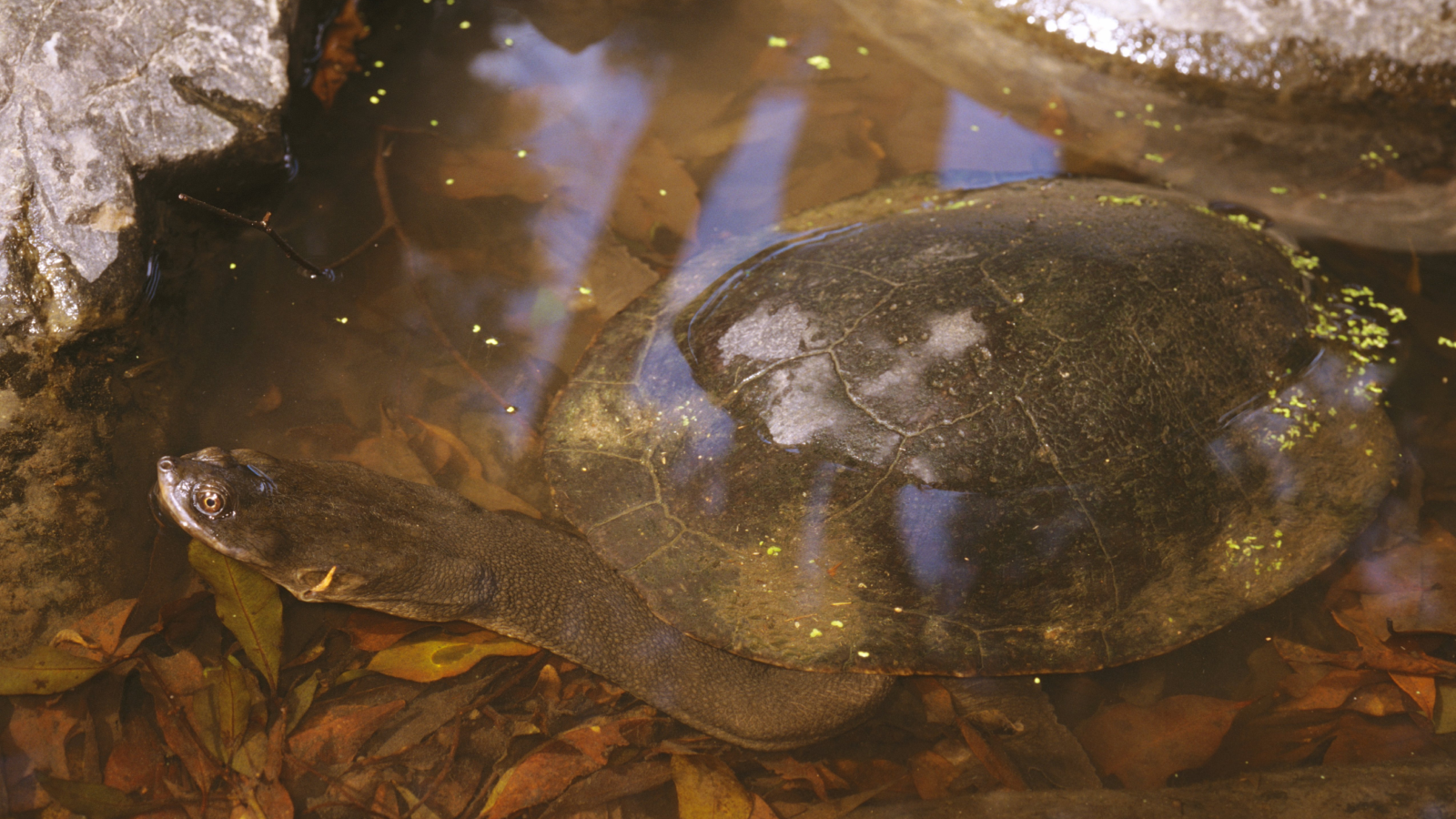How to Survive the Total Solar Eclipse of 2017
We're just 18 weeks away from the "Great American Total Solar Eclipse" that will darken skies across the continental U.S. on Aug. 21. Are you ready for it?
If you haven't started preparing to see the eclipse, the time to start is now. Between travel, lodging and eclipse-watching gear, there's a lot to plan for — and that's only the beginning. To ensure that your total solar eclipse experience isn't a total flop, there are a few more things to take into account in the days leading up to the eclipse and to the moment of totality itself.
Two veteran eclipse chasers shared their tips on how to successfully see the total solar eclipse at the Northeast Astronomy Forum (NEAF) in Suffern, New York, last weekend (April 8-9). Space.com sky columnist Joe Rao and astronomy professor Mike Reynolds of Florida State College in Jacksonville, Florida, spoke from personal experience about what to do — and what not to do — before and during the solar eclipse. Here we'll go over some of the biggest take-aways from their discussions. [Total Solar Eclipse 2017: When, Where and How to See It (Safely)]
Get to the centerline
Over the course of about 90 minutes, the skies will darken along a 70 mile-wide (113 kilometers) path from Oregon to South Carolina as the moon's shadow moves across the country from the northwest to the southeast. [Total Solar Eclipse 2017: Path, Viewing Maps and Photo Guide]Rao and Reynolds both highly recommend that people who plan to observe the solar eclipse on Aug. 21 get to the centerline, or the path of totality, rather than settling for a view of the partial eclipse, which will be visible over most of North America.
For viewers in the path of totality, the eclipse will be an entirely different experience than it will be for viewers elsewhere in the country. Even a 99.99 percent partial eclipse, in which the moon comes close to covering the entire face of the sun, is nowhere near as spectacular as totality, Rao said.
During totality, observers will experience up to 2 minutes and 40 seconds of darkness, whereas those who view the eclipse in its partial form will need eclipse glasses or other protective eyewear to notice the eclipse. So get to the path of totality. "It's really an opportunity you should not pass up," Reynolds said.
Prepare for the traffic jams
Twelve million people live along the path of totality, and another 25 million live within one day's drive, Rao said. But people from all over the U.S. will be flocking to the centerline to experience the rare and amazing celestial event that is totality. As with most crowds of people heading to a major event, there will be traffic — lots and lots of traffic.
Get the world’s most fascinating discoveries delivered straight to your inbox.
"State departments of transportation and police are expecting hurricane evacuation-like traffic," Reynolds said. So if you're planning on taking a small road trip the day of the event, give yourself plenty of time to get to the path of totality. Don't get stuck watching a partial eclipse in standstill traffic on your way to the centerline. Allot at least a few extra hours of driving, or seek lodging the night before.
Make your travel plans now
If you haven't made arrangements already, the time to map out a travel plan is now.
Hotels and campgrounds along the path of totality are filling up fast, and many are already totally booked. You may want to consider finding a place to stay that is just outside the path of totality to find better prices. Just make sure you'll have a way to get to centerline in time.
And if you plan on renting a car or an RV, make those reservations sooner rather than later. Rental prices will likely go up the longer you wait.
Watch the weather
As with most skywatching endeavors, clouds can ruin the view. Don't let the weather turn your eclipse excursion into a complete waste of time — plan ahead! Check your weather forecast regularly during the days before the eclipse and the morning of. If clouds are headed your way, you may want to drive toward clearer skies.
If you do encounter clouds on the day of the eclipse, and traveling to better weather isn't an option, don't lose hope ― a total solar eclipse can part obstructing clouds, Rao said. As the moon's shadow glides across the country, the pocket of cold air it creates can break up convective clouds, like cumulus and cumulonimbus, which form when hot air rises and cold air sinks.
"Convective clouds may actually fade away as the eclipse progresses and as the heat and light of the sun disappear behind the disc of the moon, so the eclipse may actually help you," Rao said. "That convective cloud cover may actually fade away almost completely — hopefully — thanks to the eclipse. But then again, it may not." He added that historical weather statistics may be useful.
The best weather prospects are out West, while the East Coast is the most likely to see clouds roll in, Rao and Reynolds explained.
Protect your eyes
It is never a good idea to look directly at the sun. You may have heard that watching a total solar eclipse can make you go blind. But it's not the eclipse that will blind you, Reynolds said. In fact, you should absolutely take off your eclipse glasses during totality if you want to see it in all its glory.
Before and after the eclipse, when the moon is not completely blocking the sun, it's essential to have some sort of protective eyewear to avoid damage to your eyes. Anyone watching the eclipse in its partial form will need to wear the glasses the entire time. [How to Safely Watch The 2017 Total Solar Eclipse]
Don't forget to enjoy the eclipse!
When it's finally time to sit back and enjoy the show, don't forget to watch! Think twice if you're considering taking photos or a video of the eclipse, Reynolds said. "Do not get stuck behind a telescope or camera during the entire eclipse." If you do plan to photograph the eclipse, be sure to test the equipment beforehand.
Don't let traffic jams, clouds or distractions kill your eclipse fever on the big day. With these tips, you can make the most of your eclipse-watching experience.
Email Hanneke Weitering at hweitering@space.com or follow her @hannekescience. Follow us @Spacedotcom, Facebook and Google+. Original article on Space.com.

Hanneke Weitering is an editor at Liv Science's sister site Space.com with 10 years of experience in science journalism. She has previously written for Scholastic Classroom Magazines, MedPage Today and The Joint Institute for Computational Sciences at Oak Ridge National Laboratory. After studying physics at the University of Tennessee in her hometown of Knoxville, she earned her graduate degree in Science, Health and Environmental Reporting (SHERP) from New York University. Hanneke joined the Space.com team in 2016 as a staff writer and producer, covering topics including spaceflight and astronomy.





